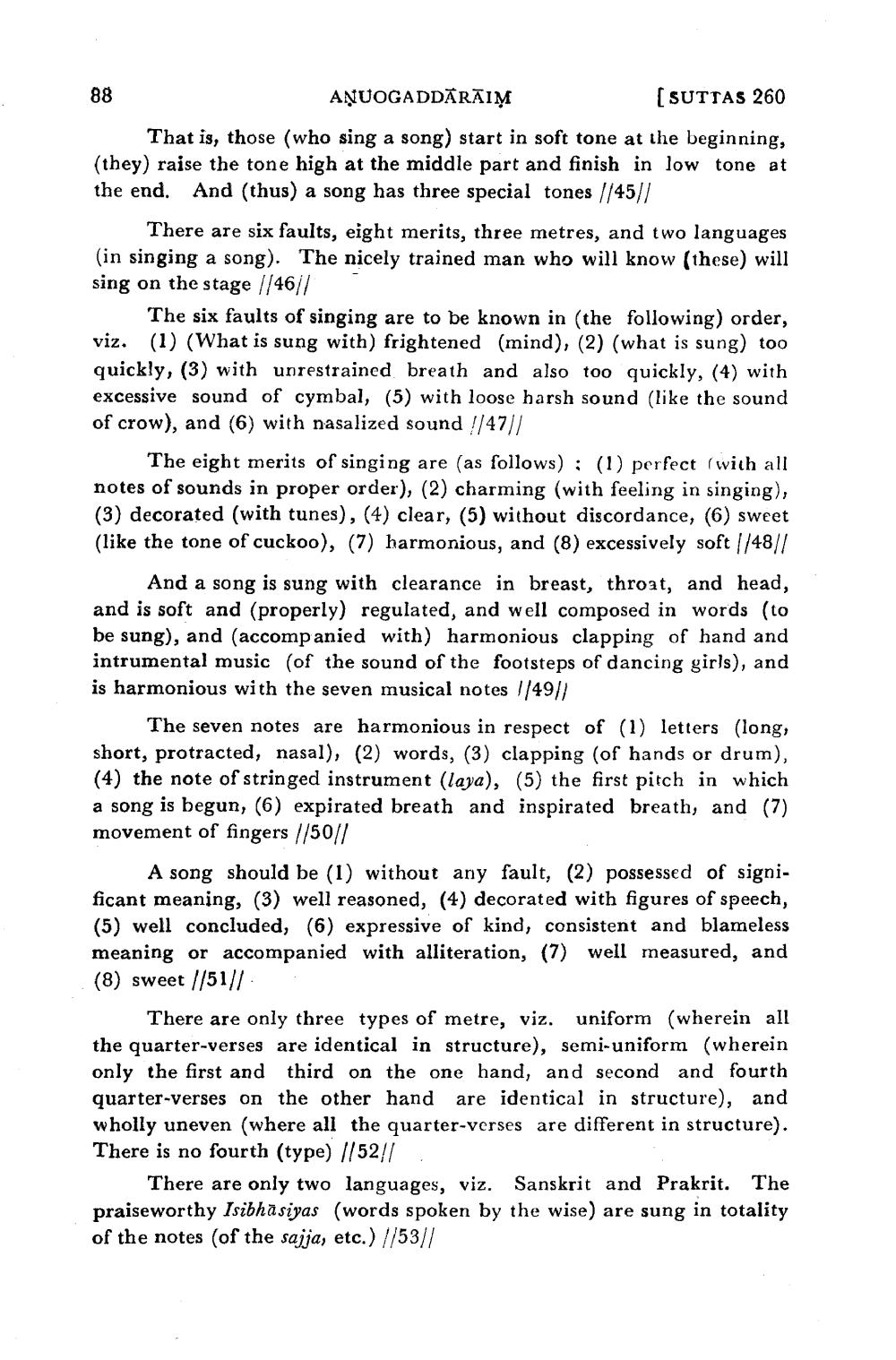________________
88
AŅUOGADDĀRĀIM
(SUTTAS 260
That is, those (who sing a song) start in soft tone at the beginning, (they) raise the tone high at the middle part and finish in low tone at the end. And (thus) a song has three special tones //45//
There are six faults, eight merits, three metres, and two languages (in singing a song). The nicely trained man who will know (these) will sing on the stage //46/
The six faults of singing are to be known in the following) order, viz. (1) (What is sung with) frightened (mind), (2) (what is sung) too quickly, (3) with unrestrained breath and also too quickly, (4) with excessive sound of cymbal, (5) with loose harsh sound (like the sound of crow), and (6) with nasalized sound !/47//
The eight merits of singing are as follows)(1) perfect (with all notes of sounds in proper order), (2) charming (with feeling in singing), (3) decorated (with tunes), (4) clear, (5) without discordance, (6) sweet (like the tone of cuckoo), (7) harmonious, and (8) excessively soft /48//
And a song is sung with clearance in breast, throat, and head, and is soft and (properly) regulated, and well composed in words (to be sung), and (accompanied with) harmonious clapping of hand and intrumental music (of the sound of the footsteps of dancing girls), and is harmonious with the seven musical notes 1/49/)
The seven notes are harmonious in respect of (1) letters (long, short, protracted, nasal), (2) words, (3) clapping (of hands or drum),
note of stringed instrument (laya), (5) the first pitch in which a song is begun, (6) expirated breath and inspirated breath, and (7) movement of fingers //50/1
A song should be (1) without any fault, (2) possessed of significant meaning, (3) well reasoned, (4) decorated with figures of speech, (5) well concluded, (6) expressive of kind, consistent and blameless
ing or accompanied with alliteration, (7) well measured, and (8) sweet //51//
There are only three types of metre, viz. uniform (wherein all the quarter-verses are identical in structure), semi-uniform (wherein only the first and third on the one hand, and second and fourth quarter-verses on the other hand are identical in structure), and wholly uneven (where all the quarter-verses are different in structure). There is no fourth (type) //52||
There are only two languages, viz. Sanskrit and Prakrit. The praiseworthy Isibhāsiyas (words spoken by the wise) are sung in totality of the notes (of the sajja, etc.) //53//




